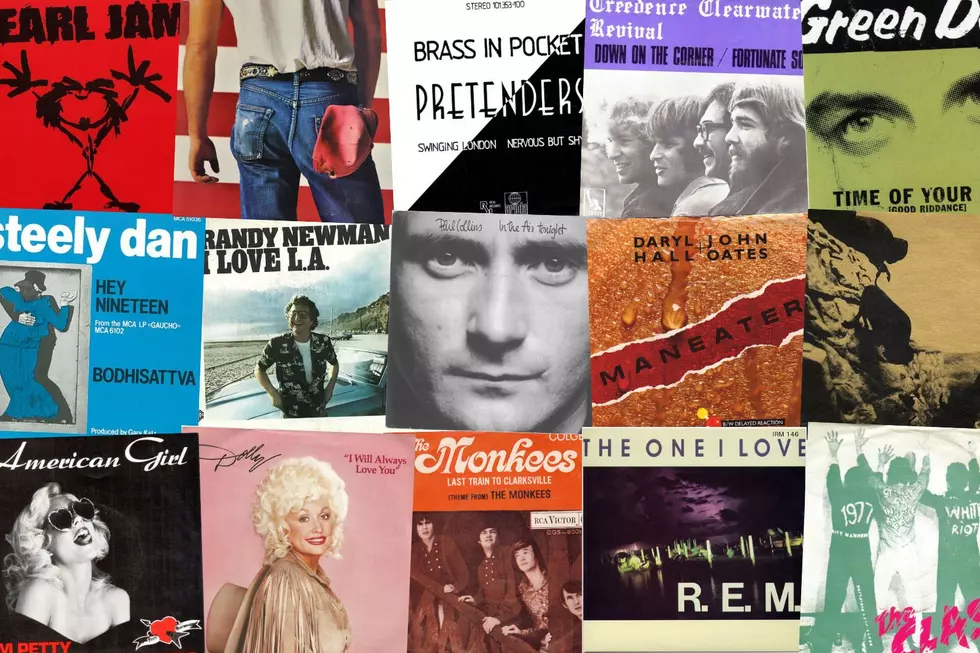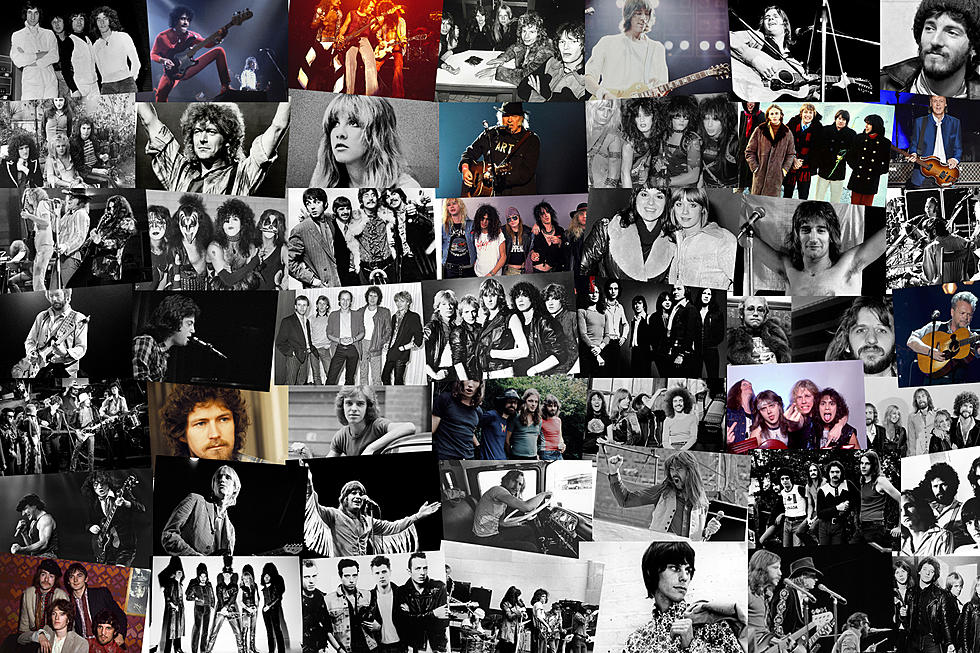
25 Years Ago: Neil Young Stages His Late-’80s Comeback
The artistic reemergence hinted at on Neil Young's bluesy 1988 return to Reprise Records, 'This Note's for You,' was realized a year later with 'Freedom' -- his most varied, most topical, most complete work since the '70s. In a confusing age, as the Berlin Wall fell, Young suddenly emerged with the same currency he'd had in the Vietnam era.
Tracks like 'Cocaine Eyes,' 'Don't Cry' and 'Heavy Love,' issued a few months prior to the Oct. 2, 1989, release date for 'Freedom' on a hard-to-find, deeply personal advance EP called 'El Dorado,' found Young once again engaging in the seesaw between heartfelt folk and torrential feedback that had made him a legend back when he first went solo. When it came time to release a new full-length, Young directly recalled the classic 'Rust Never Sleeps' album by beginning and ending with different takes of 'Rockin' in the Free World' -- one acoustic and one electric.
It would become his best-known song in ages -- a bitterly ironic theme for the emerging post-Communist period -- and his highest-ever charting track on the U.S. rock chart. And, like this comeback -- in fact, like so many things surrounding the mercurial Young -- 'Rockin' in the Free World' was drawn from an unexpected moment.
"I wrote that song out on the road," Young once told Much Music. "I really don't remember except I know I wrote it all on my bus. I thought of the first line, 'Rocking in the free world, keep on rocking in the free world.' I said, Oh God, that really says something but that's such a cliche, it's such a terrible -- it's such an obvious thing and then I knew I had to use it!"
The cinematic 'Crime in the City' stretched its gritty narrative over almost nine minutes, while 'Heavy Love' still stands as one of Young's most ferocious moments -- and that's saying something. On the other hand, 'Hangin' on a Limb' unfolded as a tender, stripped-down ballad. A note-perfect theme on an empire in decline reaches even into Young's pitiless cover of the Drifters' 'On Broadway,' which serves to transform a tune about the elusive dream of New York into another squalling indictment on derelict promises.
Young got there with the same basic cast from 'This Note's for You,' including Crazy Horse's Poncho Sampedro, multi-instrumentalist Ben Keith and a horn section featuring Steve Lawrence. 'Harvest'-era collaborator Linda Ronstadt, in another tip of the hat to Young's '70s heyday, returned to provide a pair of guest vocals. Together, they helped Young secure his Elvis Presley-'68-style comeback moment -- a connection he made more obvious by wearing a T-shirt featuring the King's image for a thunderous appearance on 'Saturday Night Live.'
Still, as celebrated as 'Freedom' became, Young ultimately criticized his own initial steps back into the light. Some of it, he felt, was overproduced. Other parts simply not given the force and energy he'd have liked -- amazing, considering the sheer power of 'Freedom.' He even sharply questioned his own ability to convey these ideas about society.
"Freedom to me is more of a personal thing," he later mused. "The freedom that I'm writing about is really a personal thing. It's based on people -- people on the street, homeless people, rich people with problems, all kinds of people. Freedom is an abstract offshoot. You can't describe freedom. How can you describe it? I tried and I failed."
That's not how it was received, however. For many, Young seemed to be firing on all cylinders once more, after a lengthy period of sometimes confusing experimentalism -- one that alienated many of even his staunchest fans. Every Young album had gone at least gold between 1969's 'Everybody Knows This Is Nowhere' and 1979's 'Rust Never Sleeps.' The '80s were a different story. 'Freedom' would become his first Top 40 album since 1982.
"I put 'Eldorado' out so people would know I was still here," Young admitted in a 1989 talk with the Village Voice. "There's something about the way things have gone for me that made me want to put it out and make sure my handwriting was on it. Pick the artwork, do everything with my friends, and put out this little record. But then, I'm sick: I only made 5,000. I said, 'That's all, that's it.' That's the way I did it -- it reemerged. Just like I'm reemerging from myself. It's a funny thing. I feel my feelings coming back."
More From WPDH-WPDA










